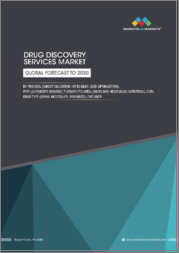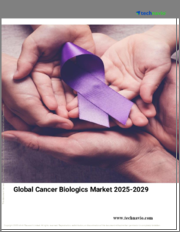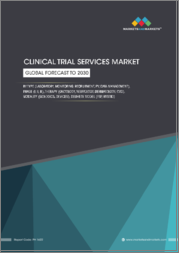
|
시장보고서
상품코드
1371891
세계 생물학적 치료제 시장 : 제품별, 유형별, 용도별, 지역별 분석(-2030년)Biologic Therapeutics Market Forecasts to 2030 - Global Analysis By Product (Gene Therapy, Cell Therapy, Vaccines, Antibody Therapeutics and Other Products), Type, Application and By Geography |
||||||
Stratistics MRC에 따르면 세계 생물학적 치료제 시장은 2023년에 4,575억 6,000만 달러를 차지하고, 2030년에는 11.3%의 복합 연간 성장률(CAGR)를 나타낼 전망이며 9,680억 8,000만 달러에 달할 것으로 예측되고 있습니다.
생물학적 공급원에서 생산되는 치료제의 개발, 생산 및 마케팅에 집중하는 제약 산업 부문을 생물학적 치료제 시장이라고 합니다. 이러한 복잡한 화학제품은 단백질, 항체, 핵산, 세포와 같은 생체 또는 그 일부를 사용하여 만들어집니다. 생물학적 치료제 또는 생물 의약품이라고도합니다.
세계보건기구(WHO)에 따르면 백신은 세계 질병 부담을 경감하는 가장 강력하고 비용 효과적인 방법 중 하나이며 매년 200만-300만명의 생명을 구할 것으로 추정되고 있습니다.
노화와 관련된 만성 질환 증가와 생물학적 제제의 파이프라인 확대
암, 자가면역질환, 대사성질환과 같은 만성질환 증가로 효율적인 대체치료의 필요성이 높아지고 있습니다. 생물학적 치료제는 많은 질병의 근본 원인을 해결할 수 있는 맞춤형 표적 치료를 제공하며 시장 확대에 박차를 가하고 있습니다. 또한, 생물학적 치료제의 개발은 제약 업계와 생명 공학 업계에서 많은 돈을 받고 있습니다. 재조합 단백질, 세포 및 유전자 치료, 단클론항체 등의 생물학적 치료제의 개발은 시장을 활성화하고 기술 혁신에 박차를 가하고 있습니다.
개발, 생산, 제조, 공급망 관리 비용이 높고 매우 복잡합니다.
생물제제의 개발 및 제조에는 연구개발, 임상시험, 제조시설 등 복잡한 절차와 다액의 비용이 듭니다. 특히 자원이 제한된 건강 관리 시스템에서는 이러한 높은 비용이 생물학적 제제의 가용성과 구매 가능성을 제한할 수 있습니다. 그러나 생물학적 치료제는 복잡한 특성으로 인해 전문 제조 시설과 제조 절차가 필요합니다. 일관된 품질과 확장성을 보장하고 견고한 공급망을 유지하는 것은 어려울 수 있으며, 생물학적 제제로 치료에 접근하거나 구매의 용이성에 영향을 미칠 수 있습니다.
생명 공학과 유전 공학의 발전과 유리한 규제 상황
생명공학, 유전공학, 재조합 DNA 기술의 발전으로 혁신적인 생물학적 요법을 창출할 가능성이 높아지고 있습니다. 이러한 기술 개발은 보다 정교하고 특이적으로 표적화된 생물학적 약제의 생산을 가능하게 하고, 이용 가능한 치료법의 수를 확대하고 있습니다. 또한 유럽의약청(EMA)과 미국 식품의약국(FDA)을 비롯한 규제기관은 생물제제의 승인에 대한 정확한 규칙을 정하여 신속한 승인 절차를 확립하고 있습니다. 이러한 규제 체제는 생물학적 치료제의 개발, 평가 및 판매에 유리한 환경을 제공합니다.
고수준의 규제와 면역원성·안전성에 대한 우려
유리한 규제 프레임워크이 존재함에도 불구하고, 생물학적 제제의 승인 절차는 복잡하고 엄격합니다. 안전성, 효능 및 품질을 증명하기 위해 기업이 수행해야 하는 대규모 전임상 및 임상시험에는 오랜 시간과 많은 비용이 소요됩니다. 그러나, 생물학적 요법에 대한 환자의 면역 반응이 유도될 수 있고, 그 안전성 및 면역원성에 우려가 생깁니다. 치료의 효능과 안전성은 이러한 면역학적 반응에 의해 영향을 받을 수 있으며, 그 정도는 다양합니다. 생물학적 치료를 효과적으로 사용하기 위해서는 이러한 문제를 효과적으로 모니터링하고 관리하는 것이 매우 중요합니다.
COVID-19의 영향
COVID-19의 유행은 효율적인 예방 접종을 만들고 배포하는 데 필수적입니다. 그 결과 mRNA와 바이러스 벡터 기반 백신과 같은 생물학적 플랫폼을 이용한 백신의 연구 개발이 크게 증가했습니다. COVID-19 백신의 효과적인 생성과 응용은 생물학적 치료의 유망성을 돋보이게 하고 감염성 대책에서 생명공학 분야의 중요성을 강조하였습니다.
예측기간 동안 혈액 제제 분야가 최대가 될 전망입니다
예측 기간 동안 최대 점유율을 차지한 것은 혈액 제제 분야였습니다. 면역글로불린, 응고 인자 및 혈장 유래 단백질을 포함한 혈액 유래 제품은 다양한 혈액 질환 및 면역 결핍의 치료에 사용되며 생물학적 요법의 일부로 간주됩니다. 이러한 품목의 사용은 많은 혈액 질환, 면역 결핍 및 기타 질병의 관리에 필수적입니다.
예측 기간 동안 복합 연간 성장률(CAGR)이 가장 높을 것으로 예상되는 것은 세포 치료 분야입니다.
세포 치료 분야는 예측 기간 동안 유리한 성장을 이루는 것으로 추정됩니다. 살아있는 세포는 질병 치료와 치유를 위해 세포 치료에 사용됩니다. 세포 요법은 손상되거나 병에 걸린 세포와 조직을 대체, 수리 및 수복하려는 급속하게 발전하는 분야입니다. 또한, 세포 요법은 종양학, 심혈관 질환, 신경 퇴행성 질환,자가 면역 질환 등 많은 치료 분야에서 잠재력을 보여줍니다.
최대 점유율을 차지하는 지역
아시아태평양은 생물학적 치료 산업이 상당한 발전과 혁신을 이루고 활기차고 빠르게 변화하는 허브로 부상하고 있기 때문에 예측 기간 동안 최대 점유율을 차지할 것으로 예상됩니다. 이 지역은 자체 건강 관리 시스템을 가진 많은 국가와 연결되어 복잡하고 매력적인 시장이되고 있습니다. 또한 암, 당뇨병, 자가면역질환 등의 만성질환의 만연에 의해 생물학적 치료에 대한 요구가 높아지고 있습니다.
복합 연간 성장률(CAGR)이 가장 높은 지역
아시아태평양의 복합 연간 성장률(CAGR)이 가장 높은 것으로 추정됩니다. 중간 소득층의 확대와 건강 관리 비용의 상승으로 생물학적 요법의 가용성이 확대되고 있습니다. 이는 의료 인프라의 건설을 장려하는 정부 정책과 함께 시장 성장을 더욱 강화하고 있습니다. 또한 아시아태평양에서는 연구개발 활동이 활황을 보이고 있으며 국내외 제약기업이 생물제제 개발에 많은 투자를 하고 있습니다. 바이오테크놀로지의 생태계가 번성하기 때문에 인재가 모여 혁신이 촉진되는 결과가 되고 있습니다. 이 지역 정부도 승인 절차를 간소화하기 위해 노력하고 있으며, 바이오 의약품 기업 시장 진입의 용이성을 향상시키고 있습니다.
무료 맞춤형 서비스
이 보고서를 구독하는 고객은 다음 무료 맞춤설정 옵션 중 하나를 사용할 수 있습니다.
- 기업 프로파일
- 추가 시장 기업의 종합적 프로파일링(3사까지)
- 주요 기업의 SWOT 분석(3사까지)
- 지역 세분화
- 고객의 관심에 응한 주요국 시장 추계, 예측 및 복합 연간 성장률(CAGR)(주: 타당성 확인에 따름)
- 경쟁 벤치마킹
- 제품 포트폴리오, 지리적 존재, 전략적 제휴에 기초한 주요 기업 벤치마킹
목차
제1장 주요 요약
제2장 서문
- 개요
- 이해관계자
- 조사 범위
- 조사 방법
- 데이터 마이닝
- 데이터 분석
- 데이터 검증
- 조사 접근
- 조사원
- 1차 조사원
- 2차 조사원
- 전제조건
제3장 시장 동향 분석
- 소개
- 성장 촉진요인
- 억제요인
- 기회
- 위협
- 제품분석
- 용도 분석
- 신흥 시장
- COVID-19의 영향
제4장 Porter's Five Forces 분석
- 공급기업의 협상력
- 구매자의 협상력
- 대체품의 위협
- 신규 참가업체의 위협
- 경쟁 기업간 경쟁 관계
제5장 세계 생물학적 치료제 시장 : 제품별
- 소개
- 유전자 치료
- 세포치료
- 백신
- 항체의약
- 기타 제품
제6장 세계 생물학적 치료제 시장 : 유형별
- 소개
- 알레르기 물질 추출물
- 혈액제제
- 인간의 세포 및 조직
- 단백질
- 이종이식제품
- 기타 유형
제7장 세계 생물학적 치료제 시장 : 용도별
- 소개
- 자가면역질환
- 감염증
- 암
- 기타 용도
제8장 세계 생물학적 치료제 시장 : 지역별
- 소개
- 북미
- 미국
- 캐나다
- 멕시코
- 유럽
- 독일
- 영국
- 이탈리아
- 프랑스
- 스페인
- 기타 유럽
- 아시아태평양
- 일본
- 중국
- 인도
- 호주
- 뉴질랜드
- 한국
- 기타 아시아태평양
- 남미
- 아르헨티나
- 브라질
- 칠레
- 기타 남미
- 중동 및 아프리카
- 사우디아라비아
- 아랍에미리트(UAE)
- 카타르
- 남아프리카
- 기타 중동 및 아프리카
제9장 주요 발전
- 계약, 파트너십, 협업 및 합작투자(JV)
- 인수 및 합병
- 신제품 발매
- 사업 확대
- 기타 주요 전략
제10장 기업 프로파일
- AbbVie Inc
- Amgen Inc.
- AstraZeneca Plc
- Aurobindo Pharma Ltd.
- Baxter International Inc
- Biocon Ltd.
- Celltrion Healthcare Co. Ltd.
- GlaxoSmithKline Plc
- Merck and Co. Inc
- Novartis AG
- Pfizer Inc
- Precision Biologics Inc
- Samsung Electronics Co. Ltd
According to Stratistics MRC, the Global Biologic Therapeutics Market is accounted for $457.56 billion in 2023 and is expected to reach $968.08 billion by 2030 growing at a CAGR of 11.3% during the forecast period. The pharmaceutical industry sector that concentrates on the development, production, and marketing of therapeutic medicines generated from biological sources is referred to as the biologic therapeutics market. These complex chemicals are created using living organisms or their parts, such as proteins, antibodies, nucleic acids, or cells. They are also referred to as biologics or biological pharmaceuticals.
According to World Health Organization, vaccines are one of the most powerful and cost-effective ways to reduce the global burden of disease and are estimated to save 2-3 million lives every year.
Market Dynamics:
Driver:
Increasing prevalence of age-related and chronic diseases and expanding pipeline of biologics
The need for efficient treatment alternatives is being driven by the increased prevalence of chronic diseases like cancer, autoimmune conditions, and metabolic diseases. Biologic medicines provide customized, targeted treatments that can address the underlying causes of many disorders, spurring market expansion. Additionally, the development of biologic medicines has received significant funding from the pharmaceutical and biotechnology industries. Biologic medication development, including recombinant proteins, cell and gene therapies, and monoclonal antibodies, is boosting the market and spurring innovation.
Restraint:
High costs of development and production, manufacturing and supply chain management are quite complex
Complex procedures and high expenditures, such as those associated with research and development, clinical trials, and manufacturing facilities, are involved in the creation and production of biologic therapies. Particularly in healthcare systems with limited resources, these high costs may restrict the availability and affordability of biologic medications. However, due to their complicated nature, biologic pharmaceuticals need specialized production facilities and procedures. It can be difficult to ensure consistent quality, scaleability, and maintain a strong supply chain, which may have an impact on the accessibility and affordability of biologic treatments.
Opportunity:
Biotechnology and genetic engineering advancements and favorable regulatory landscape
The potential for creating innovative biological therapies has increased as a result of ongoing developments in biotechnology, genetic engineering, and recombinant DNA technology. These technological developments make it possible to produce biological medications that are more sophisticated and specifically targeted, expanding the number of available treatments. Additionally, regulatory organizations have established precise rules and accelerated paths for the approval of biologic therapies, including the European Medicines Agency (EMA) and the U.S. Food and Drug Administration (FDA). These regulatory regimes offer a favorable environment for the creation, assessment, and marketing of biologic medicines.
Threat:
High standards of regulation and concerns about immunogenicity and safety
Despite the existence of favorable regulatory frameworks, the complex and stringent approval procedures for biologic therapies. Extensive preclinical and clinical trials that must be conducted by companies to prove safety, efficacy, and quality can take a long time and cost a lot of funds. However, patients' immune responses to biological therapies may be induced, raising concerns regarding their safety and immunogenicity. The effectiveness and safety of the treatment may be impacted by these immunological reactions, which can range in severity. For biological treatments to be used effectively, it is crucial to provide effective monitoring and management of these problems.
COVID-19 Impact:
The COVID-19 epidemic made the creation and distribution of efficient vaccinations essential. As a result, vaccine research and development significantly increased, utilizing biological platforms like mRNA and viral vector-based vaccines. The effective creation and application of COVID-19 vaccines highlighted the promise of biological treatments and emphasized the significance of the biotechnology sector in combating infectious diseases.
The blood products segment is expected to be the largest during the forecast period
Blood products segment commanded the largest share over the forecast period. Blood-derived products, including immunoglobulins, clotting factors, and plasma-derived proteins, which are used to treat a variety of blood illnesses and immunological deficiencies, are also considered to be part of biologic therapies. The use of these items is essential in the management of a number of blood diseases, immunological deficiencies, and other ailments.
The cell therapy segment is expected to have the highest CAGR during the forecast period
Cell therapy segment is estimated to witness lucrative growth over the projection period. Living cells are used in cell therapy to treat or cure diseases. It is a fast-developing area that seeks to replace, restore, or fix damaged or sick cells or tissues. Additionally, cell therapy has demonstrated potential in a number of therapeutic fields, including oncology, cardiovascular illness, neurodegenerative disorders, and autoimmune diseases.
Region with largest share:
Asia Pacific is expected to hold largest share over the forecast period as the biological therapies industry experiences substantial development and innovation, the Asia-Pacific region is emerging as a vibrant and quickly changing hub. This region is connected to numerous nations with distinctive healthcare systems, making it a complex yet attractive market. Additionally, the region's growing need for biological treatments is being driven by the prevalence of chronic diseases like cancer, diabetes, and autoimmune disorders.
Region with highest CAGR:
Asia Pacific is estimated to hold highest CAGR. The availability of biological therapies has expanded as a result of an expanding middle-class population and rising healthcare costs. This has further propelled the market's growth, along with government policies to encourage the construction of healthcare infrastructure. Additionally, the Asia-Pacific region is experiencing a boom in research and development activity, with both domestic and foreign pharmaceutical firms making significant investments in the development of biologic drugs. A thriving biotechnology ecosystem has resulted in an outcome that draws in talent and encourages innovation. Governments in the area are also making efforts to simplify approval procedures, improving the simplicity of market access for biopharmaceutical firms.
Key players in the market:
Some of the key players in Biologic Therapeutics Market include: AbbVie Inc, Amgen Inc., AstraZeneca Plc, Aurobindo Pharma Ltd., Baxter International Inc, Biocon Ltd., Celltrion Healthcare Co. Ltd., GlaxoSmithKline Plc, Merck and Co. Inc, Novartis AG, Pfizer Inc , Precision Biologics Inc and Samsung Electronics Co. Ltd.
Key Developments:
In May 2022, Precision BioLogic Inc., a leading developer of hemostasis diagnostic products, announceD the launch of its new CRYOcheck Chromogenic Factor IX assay in Canada, the European Union, Australia, and New Zealand following market authorization by Health Canada and respective in-country regulatory authorities. The announcement was made at the World Federation of Hemophilia Congress taking place in Montreal
Products Covered:
- Gene Therapy
- Cell Therapy
- Vaccines
- Antibody Therapeutics
- Other Products
Types Covered:
- Allergenic Extracts
- Blood Products
- Human Cells and Tissues
- Protein
- Xenotransplantation Products
- Other Types
Applications Covered:
- Autoimmune Diseases
- Infectious Diseases
- Cancer
- Other Applications
Regions Covered:
- North America
- US
- Canada
- Mexico
- Europe
- Germany
- UK
- Italy
- France
- Spain
- Rest of Europe
- Asia Pacific
- Japan
- China
- India
- Australia
- New Zealand
- South Korea
- Rest of Asia Pacific
- South America
- Argentina
- Brazil
- Chile
- Rest of South America
- Middle East & Africa
- Saudi Arabia
- UAE
- Qatar
- South Africa
- Rest of Middle East & Africa
What our report offers:
- Market share assessments for the regional and country-level segments
- Strategic recommendations for the new entrants
- Covers Market data for the years 2021, 2022, 2023, 2026, and 2030
- Market Trends (Drivers, Constraints, Opportunities, Threats, Challenges, Investment Opportunities, and recommendations)
- Strategic recommendations in key business segments based on the market estimations
- Competitive landscaping mapping the key common trends
- Company profiling with detailed strategies, financials, and recent developments
- Supply chain trends mapping the latest technological advancements
Free Customization Offerings:
All the customers of this report will be entitled to receive one of the following free customization options:
- Company Profiling
- Comprehensive profiling of additional market players (up to 3)
- SWOT Analysis of key players (up to 3)
- Regional Segmentation
- Market estimations, Forecasts and CAGR of any prominent country as per the client's interest (Note: Depends on feasibility check)
- Competitive Benchmarking
- Benchmarking of key players based on product portfolio, geographical presence, and strategic alliances
Table of Contents
1 Executive Summary
2 Preface
- 2.1 Abstract
- 2.2 Stake Holders
- 2.3 Research Scope
- 2.4 Research Methodology
- 2.4.1 Data Mining
- 2.4.2 Data Analysis
- 2.4.3 Data Validation
- 2.4.4 Research Approach
- 2.5 Research Sources
- 2.5.1 Primary Research Sources
- 2.5.2 Secondary Research Sources
- 2.5.3 Assumptions
3 Market Trend Analysis
- 3.1 Introduction
- 3.2 Drivers
- 3.3 Restraints
- 3.4 Opportunities
- 3.5 Threats
- 3.6 Product Analysis
- 3.7 Application Analysis
- 3.8 Emerging Markets
- 3.9 Impact of Covid-19
4 Porters Five Force Analysis
- 4.1 Bargaining power of suppliers
- 4.2 Bargaining power of buyers
- 4.3 Threat of substitutes
- 4.4 Threat of new entrants
- 4.5 Competitive rivalry
5 Global Biologic Therapeutics Market, By Product
- 5.1 Introduction
- 5.2 Gene Therapy
- 5.3 Cell Therapy
- 5.4 Vaccines
- 5.5 Antibody Therapeutics
- 5.6 Other Products
6 Global Biologic Therapeutics Market, By Type
- 6.1 Introduction
- 6.2 Allergenic Extracts
- 6.3 Blood Products
- 6.4 Human Cells and Tissues
- 6.5 Protein
- 6.6 Xenotransplantation Products
- 6.7 Other Types
7 Global Biologic Therapeutics Market, By Application
- 7.1 Introduction
- 7.2 Autoimmune Diseases
- 7.3 Infectious Diseases
- 7.4 Cancer
- 7.5 Other Applications
8 Global Biologic Therapeutics Market, By Geography
- 8.1 Introduction
- 8.2 North America
- 8.2.1 US
- 8.2.2 Canada
- 8.2.3 Mexico
- 8.3 Europe
- 8.3.1 Germany
- 8.3.2 UK
- 8.3.3 Italy
- 8.3.4 France
- 8.3.5 Spain
- 8.3.6 Rest of Europe
- 8.4 Asia Pacific
- 8.4.1 Japan
- 8.4.2 China
- 8.4.3 India
- 8.4.4 Australia
- 8.4.5 New Zealand
- 8.4.6 South Korea
- 8.4.7 Rest of Asia Pacific
- 8.5 South America
- 8.5.1 Argentina
- 8.5.2 Brazil
- 8.5.3 Chile
- 8.5.4 Rest of South America
- 8.6 Middle East & Africa
- 8.6.1 Saudi Arabia
- 8.6.2 UAE
- 8.6.3 Qatar
- 8.6.4 South Africa
- 8.6.5 Rest of Middle East & Africa
9 Key Developments
- 9.1 Agreements, Partnerships, Collaborations and Joint Ventures
- 9.2 Acquisitions & Mergers
- 9.3 New Product Launch
- 9.4 Expansions
- 9.5 Other Key Strategies
10 Company Profiling
- 10.1 AbbVie Inc
- 10.2 Amgen Inc.
- 10.3 AstraZeneca Plc
- 10.4 Aurobindo Pharma Ltd.
- 10.5 Baxter International Inc
- 10.6 Biocon Ltd.
- 10.7 Celltrion Healthcare Co. Ltd.
- 10.8 GlaxoSmithKline Plc
- 10.9 Merck and Co. Inc
- 10.10 Novartis AG
- 10.11 Pfizer Inc
- 10.12 Precision Biologics Inc
- 10.13 Samsung Electronics Co. Ltd



















